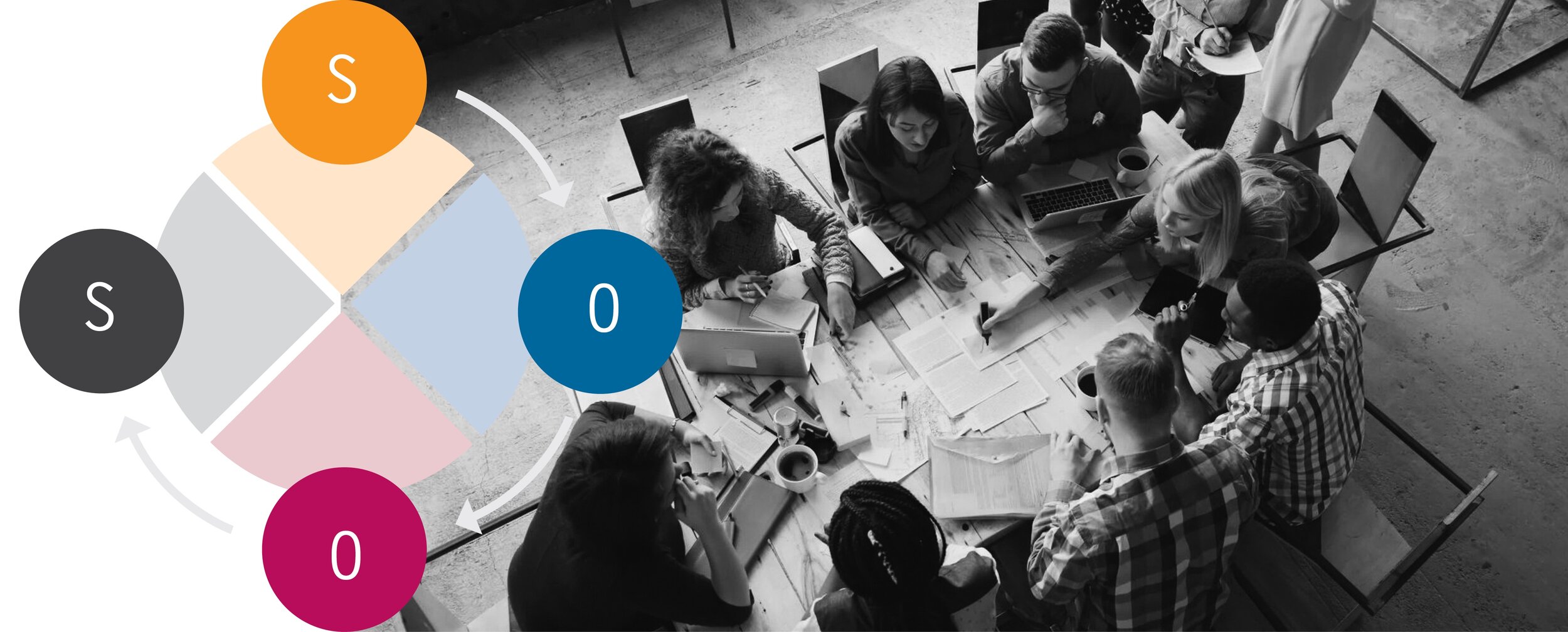
Author: Phil Hartwick
First Published: 2021
Teams often miss the opportunity to genuinely collaborate because they enter into discussions without clarity of what the discussion is for and how the discussion should proceed to get the most from the time together.
This is often frustrating for team members as they sense the team is wandering from one person’s contribution to another without clear progress being made.
One of the most important contributions you can make to helping a team work well together is a simple structure for addressing joint problems or challenges.
Our favourite and one we have been using and teaching for years is what we affectionately refer as ‘SOOS’ – pronounced like Dr. ‘Seus’.
SOOS is a simple 4 step model for helping a team step through a problem or challenge.

The first S represents Situation. This is everything we collectively know about the problem or challenge. The more fact and evidence based, rather than opinion and assumptions the better. It is here we really want to define the problem and its impact. It is important to prevent the group to early attempts to solve the problem at this point. This step should clearly answer the questions: ‘What is the problem?’ And ‘Why is this important to resolve?’
The next step (O) is for Objective. This step is where we define what we are trying to achieve, or what ideal looks like. We must fundamentally agree on the objective before we proceed to tackle the problem. It is also easy to have multiple objectives and where this is the case, that the team identifies the objective that is important to work on first.
The 3rd step (O) is to determine all of the possible Options for how to deal with the problem. This is where we should spend the most time. It includes listing anything that has already been tried along with all ideas that haven’t been tried. We suggest that the team members brainstorm on their own in silence initially – to avoid being captured by the first few ideas that emerge. What you want out of this session is to collect as many ideas or options as people can think of before any evaluation of the ideas occurs.
To do this, we have team members list their ideas on paper, and ideally each idea on a separate sticky note. Once the ideas are captured, then they can be shared and considered one at a time, and evaluated. This means looking at the pros and cons of each, or the cost and benefits. Often, what can emerge is a new option that is a combination of options.
The final step (S) is to reach the best Solution. Often this falls out of the discussion of the options. What you are seeking at this point is that the group can reach a consensus (they can all agree to support) about the best option to take.
